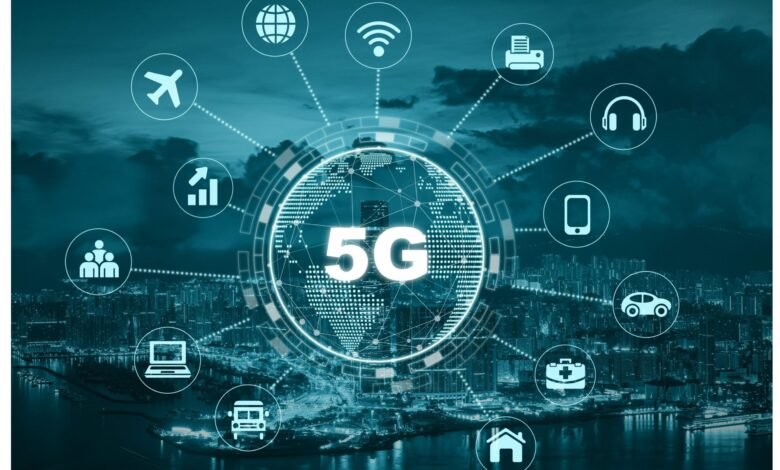5G Technology: Unlocking the Potential of Hyperconnectivity

Wireless connectivity has evolved significantly since the days of 1G, where mobile communication was just starting to take shape. Each subsequent generation brought improvements in speed, latency, and capabilities. With the advent of 5G, we are on the cusp of a new era that promises to connect not just people, but also devices, machines, and entire industries.
Understanding 5G Technology
What is 5G?
At its core, 5G refers to the fifth generation of wireless technology. It’s designed to provide faster speeds, lower latency, and higher capacity compared to its predecessor, 4G. 5G achieves this by utilizing a higher frequency spectrum and employing advanced technologies like beamforming and massive MIMO (Multiple-Input Multiple-Output).
How does 5G differ from 4G?
Unlike its predecessors, 5G isn’t just about faster download speeds for your smartphone. It’s about creating an ecosystem that can support a wide range of applications, from autonomous vehicles and smart cities to remote surgeries and immersive virtual experiences.
The Core Features of 5G
5G’s foundation rests on three key pillars: Enhanced Mobile Broadband (eMBB), Ultra-Reliable Low Latency Communications (URLLC), and Massive Machine-Type Communications (mMTC). These pillars collectively enable the diverse needs of various industries.
The Benefits of 5G
Lightning-Fast Speeds
With download speeds potentially reaching up to 10 gigabits per second, 5G is set to revolutionize how we consume and share content. This speed boost will empower applications that demand high data rates, such as 4K and 8K streaming, virtual reality gaming, and augmented reality experiences.
Ultra-Low Latency
5G’s ultra-low latency capabilities, with delays as low as one millisecond, will pave the way for real-time applications that were once deemed impossible. This is crucial for activities like remote surgery, where split-second decisions can mean the difference between life and death.
Massive Device Connectivity
One of 5G’s standout features is its ability to handle an exponentially larger number of devices simultaneously. This is essential for the Internet of Things (IoT), where countless devices and sensors need to communicate seamlessly to enable smart homes, smart cities, and industrial automation.

Enabling the Internet of Things (IoT)
5G’s reliability and low power consumption make it an ideal candidate to power the IoT. From connected appliances and wearable devices to smart agriculture and environmental monitoring, 5G will underpin the interconnected world of tomorrow.
Industries Transformed by 5G
Healthcare
The healthcare sector will benefit immensely from 5G, enabling remote consultations, telemedicine, and even complex surgeries conducted by robotic systems controlled by expert surgeons from miles away.
Transportation
5G’s low latency and high reliability are a boon for the transportation industry, paving the way for safer and more efficient autonomous vehicles that can communicate with each other and the surrounding infrastructure.
Manufacturing
The manufacturing process will become more streamlined and efficient with the help of 5G-powered industrial automation. Factories will be able to optimize operations, minimize downtime, and enhance quality control.
Entertainment
Entertainment will take a leap forward with 5G-enabled augmented reality and virtual reality experiences. Immersive storytelling, interactive gaming, and virtual tourism will become more captivating and accessible.
Overcoming Challenges and Concerns
Infrastructure Requirements
Implementing 5G requires a significant investment in infrastructure, including the installation of small cells, fiber-optic cables, and base stations. This rollout presents logistical and regulatory challenges.
Security and Privacy
As 5G connects more devices and industries, ensuring security and privacy becomes paramount. Safeguarding networks from cyber threats and protecting user data will be critical.
Health Concerns
Despite rigorous scientific studies showing no conclusive evidence of harm, concerns about the health effects of prolonged exposure to electromagnetic radiation still persist.

5G and the Future of Communication
Augmented Reality (AR) and Virtual Reality (VR)
5G’s high-speed, low-latency capabilities will transform AR and VR experiences. From virtual meetings to interactive educational content, these technologies will become more immersive and engaging.
Remote Surgery and Telemedicine
Surgeons will be able to perform procedures remotely with the precision of robotic systems, expanding access to medical expertise and improving patient outcomes, especially in remote areas.
Autonomous Vehicles
5G’s connectivity will be crucial for the development of autonomous vehicles. These vehicles will communicate with each other and traffic infrastructure, enhancing safety and efficiency on the roads.
The Global Rollout of 5G
Leading the Technological Race
Countries and companies around the world are competing to lead in 5G technology. This race for dominance is driven by the economic and strategic advantages that come with being at the forefront of the technological revolution.

Challenges in Implementation
While the benefits of 5G are substantial, there are challenges to overcome, including regulatory hurdles, spectrum allocation, and the need for international standards to ensure interoperability.
Conclusion: A Hyperconnected 5G Technology
In conclusion, 5G technology holds immense promise in shaping a hyperconnected future. With its lightning-fast speeds, ultra-low latency, and the ability to connect billions of devices, 5G will underpin innovations that span industries and enhance the way we live, work, and communicate.
Read More: Layers of Loss: Understanding Compounded Grief
Frequently Asked Questions (5G Technology)
What is 5G technology? 5G technology refers to the fifth generation of wireless communication, characterized by faster speeds, lower latency, and greater device connectivity.
How does 5G benefit industries? 5G benefits industries by enabling real-time applications, enhancing automation, and connecting devices for improved efficiency and innovation.
Are there health risks associated with 5G? Extensive research has not provided conclusive evidence of health risks from 5G’s electromagnetic radiation.
What is the role of 5G in autonomous vehicles? 5G’s connectivity is essential for communication between autonomous vehicles and infrastructure, improving safety and navigation.
How will 5G impact entertainment? 5G will enable immersive experiences like augmented reality gaming and virtual tourism, transforming the entertainment landscape.
Read More: The Rise of Blockchain: Revolutionizing Digital Transactions












2 Comments